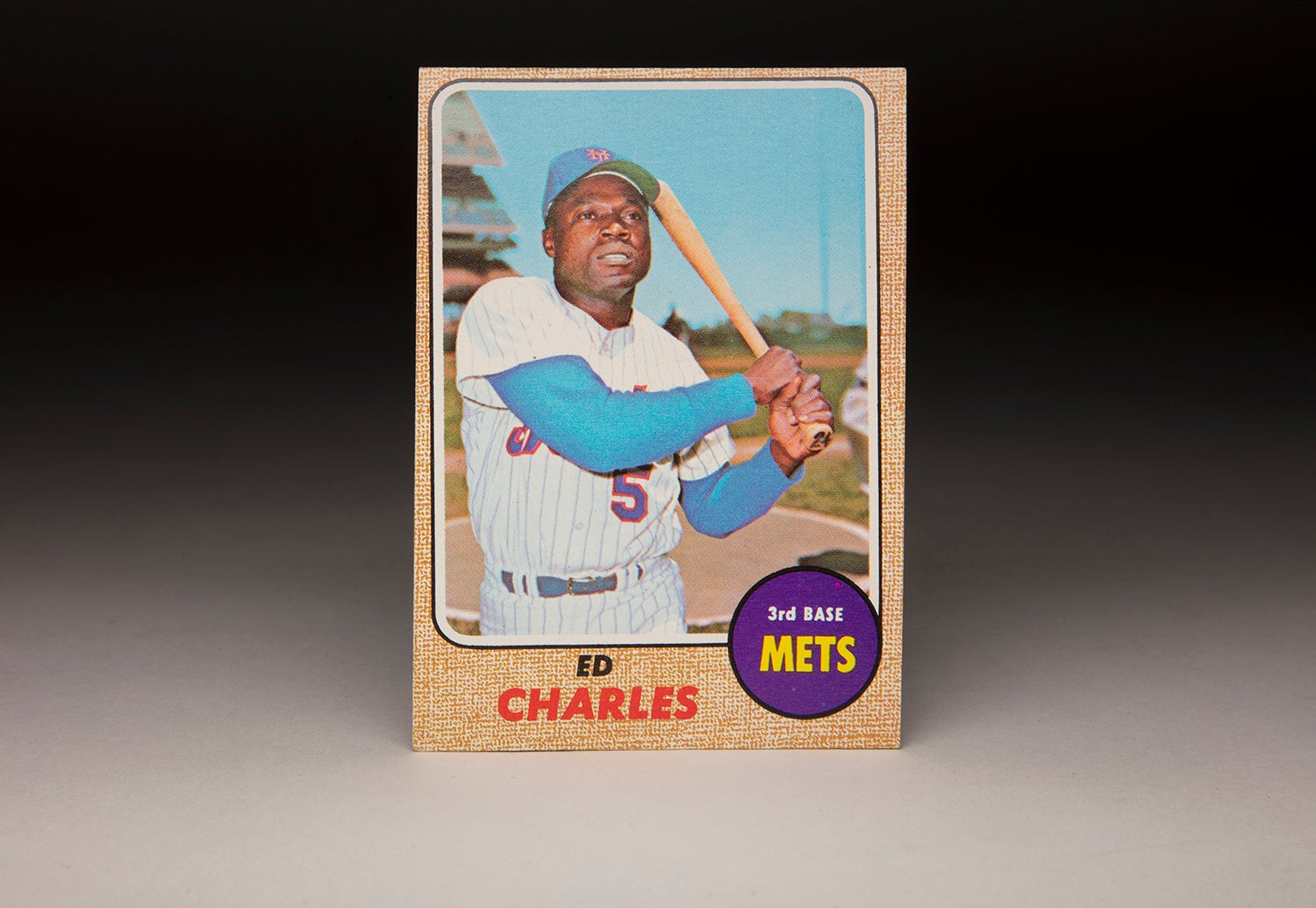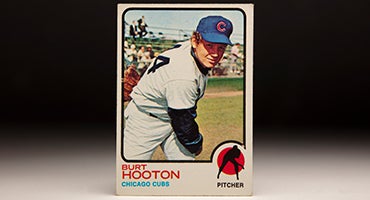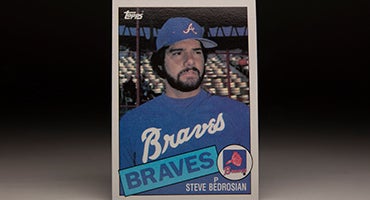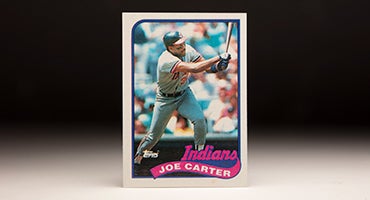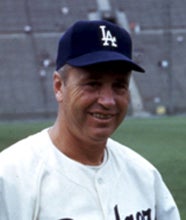- Home
- Our Stories
- #CardCorner: 1981 Topps Rick Sutcliffe
#CardCorner: 1981 Topps Rick Sutcliffe
When ranking the Top 10 trade deadline deals in baseball history, any list starts – and potentially ends – with the Cubs acquiring Rick Sutcliffe from Cleveland on June 13, 1984.
Cleveland didn’t do bad in that grade, getting Joe Carter – who would turn into a star – along with Mel Hall and Don Schulze. Sutcliffe, however, brought Chicago its first National League postseason berth in 39 years.
Few players acquired midseason ever performed better for their new team.

Born June 21, 1956, in Independence, Mo., Sutcliffe was a three-sport star for that town’s Van Horn High School. As a 6-foot-6 high school senior, Sutcliffe quarterbacked the football team (he was a scholarship target of Midwest powerhouses Nebraska and Oklahoma), starred on the basketball court and pitched Van Horn to the semifinals of the Missouri 2-A state tournament – where a balk call against Sutcliffe proved to be the deciding run in a 3-2 loss.
“He’s never seen a move like that,” Sutcliffe told the Kansas City Times about the third base umpire who made the balk call. “My foot was pointed right at the (third base) bag. But it’s his call. It’s his decision.”
The Dodgers selected Sutcliffe with the 21st overall pick in the 1974 MLB June Draft, and Sutcliffe – who had toyed with the idea of attending Arizona State – quickly signed and reported to Bellingham of the Northwest League.
“If I had made a list of the teams I thought would choose me, I would have put L.A. at the bottom of it,” Sutcliffe told the Kansas City Times. “They watched me pitch only three times, twice as a junior and once my senior year. Ed Charles of the Mets saw me about every game and I became great friends with him.”
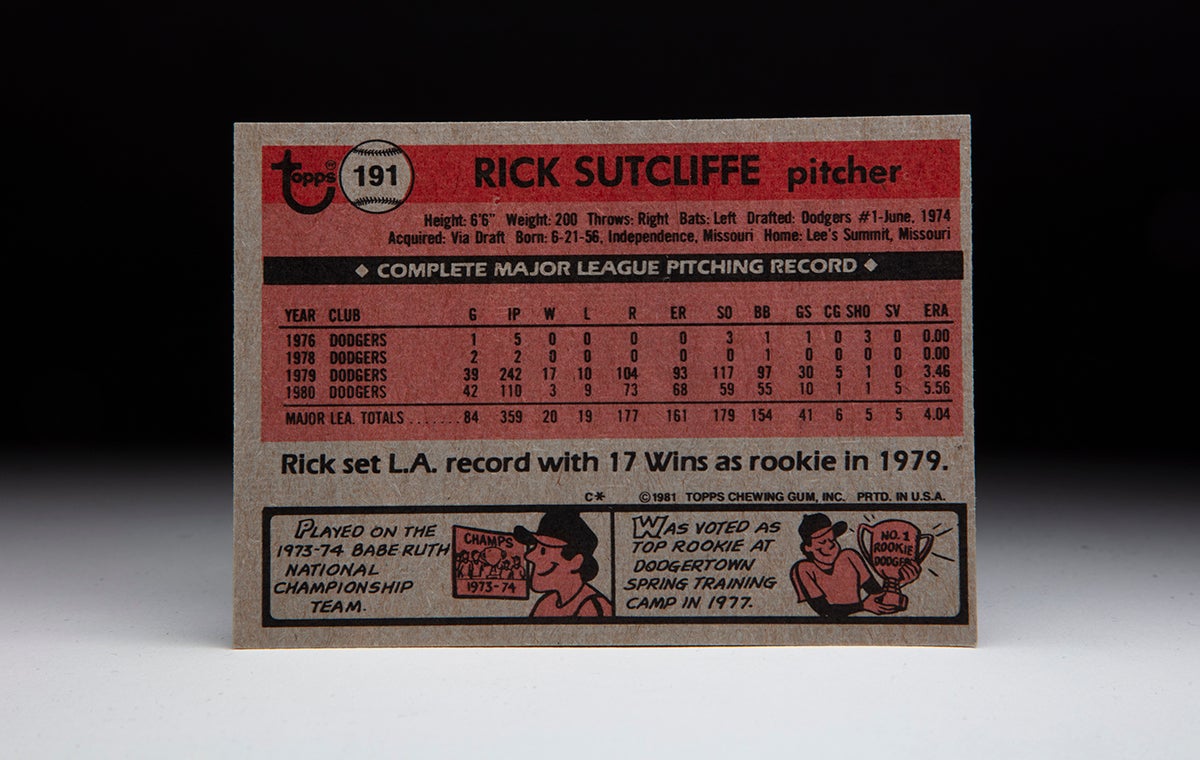
In Bellingham, Sutcliffe lost his first three decisions but then reeled off 10 straight wins, finishing the season with a 10-3 mark and a 3.32 ERA while pitching four one-hitters. He then reported to the Dodgers’ team in the Arizona Instructional League before earning an invitation to Los Angeles’ 1975 Spring Training camp as a non-roster player.
Sutcliffe had his eyes set on an assignment to Double-A but the Dodgers sent him to Class A Bakersfield of the California League, where he went 8-16 with a 4.15 ERA over 193 innings. He made his Double-A debut the following year for Waterbury of the Eastern League, posting a 10-11 mark and 3.18 ERA.
On Sept. 29, 1976, Sutcliffe made his major league debut in the first game managed by Tommy Lasorda after Walter Alston had resigned the previous day. Sutcliffe allowed just two hits and a walk over five shutout innings against the Astros, drawing a no-decision in a game Los Angeles eventually won 1-0.
“This is the greatest day of my life so far as baseball is concerned,” Lasorda told United Press International.
For Sutcliffe, it was also a momentous occasion – but, unlike Lasorda, Sutcliffe’s life as a big league regular would be a few years in the future.
In 1977, Sutcliffe earned the Mulvey Award, given annually to the top Dodgers rookie in Spring Training. But after starting and winning Triple-A Albuquerque’s opening game, Sutcliffe struggled and did not post another victory until June. He finished the season with a 3-10 record and 6.43 ERA while battling a shoulder injury.
“I was a young, cocky kid and I expected everything to go my way last year,” Sutcliffe told the Albuquerque Journal in the summer of 1978. “This year, (Albuquerque manager Del Crandall) really helped me. I’ve always had a good breaking pitch but I was afraid to throw it in the ballpark. Del kind of got on me about it and that really helped.
“Now I don’t worry like I used to, like worrying about what the Dodgers were thinking. I’ve got to let things happen and forget about what’s going on up at L.A. and concentrate on what’s happening here. Then, I’ll have a chance to be there.”
Sutcliffe went 13-6 with a 4.45 ERA in 1978 but only appeared in two games big leagues, both in relief, thanks to a deep Dodgers starting rotation that employed just six pitchers the entire season, including four – Don Sutton, Burt Hooton, Tommy John and Doug Rau – who made at least 30 starts apiece.
But Sutcliffe earned a spot in the Dodgers bullpen to start the 1979 season. And when Hooton was a late scratch with the flu on May 3, Sutcliffe stepped in and threw a complete game against the Phillies in a 5-2 Dodgers win.

When Rau and Andy Messersmith were later sidelined with injuries, Sutcliffe’s spot was secure.
“Doug and Andy are two good friends of mine,” Sutcliffe told the Pittsburgh Press after a complete game four-hitter against the Pirates on June 4. “And it sounds like a terrible thing to say, but when we got the bad news about them, it gave me sort of a lift. I knew the rest of us would have to bear down more.”
Sutcliffe carried the Dodgers throughout the summer, finishing with a 17-10 record and 3.46 ERA over 242 innings. He was named the National League’s Rookie of the Year in a landslide.
“I still don’t believe I won (the award),” Sutcliffe told the Associated Press. “It didn’t even look like I would make the club (out of Spring Training).
“Someone asked me late in the year if I ever thought I’d have that many victories and I said: ‘Sure, but in Triple-A, not the majors.”
But his success from 1979 did not carry over into the 1980. That season, Sutcliffe started the year 0-2 with an 8.33 ERA in his first six starts and was removed from the Dodgers’ rotation. He returned in late June and pitched a three-hit shutout over the Astros when Sutton was sidelined with a groin pull but continued to be plagued by inconsistency and spent most of the year in the bullpen.
For the season, Sutcliffe was 3-9 with a 5.56 ERA – and the Dodgers were 16-26 in games he appeared, including their one-game tiebreaker for the NL West title against the Astros where Sutcliffe allowed three runs on one-third of an inning in Houston’s 7-1 win.
“You say to yourself: ‘Last year I won 17, this year I’m gonna win 20,’” Sutcliffe told United Press International. “I realize now I can’t do that.”
Sutcliffe struggled again in 1981, going 2-2 with a 4.02 ERA as a spot starter while missing much of the second half of the season with a foot injury. He was not placed on the postseason roster as the Dodgers advanced all the way to the World Series, where they defeated the Yankees in six games. Sutcliffe and Lasorda reportedly exchanged heated words when Sutcliffe learned he would not be pitching in the postseason.
On Dec. 9, 1981, the Dodgers traded Sutcliffe and infielder Jack Perconte to Cleveland in exchange for Jack Fimple, Jorge Orta and Larry White.
“My run-in with Sutcliffe has nothing to do with his ability,” Lasorda told UPI after the trade. “He slumped a bit the last two years but I’ve always said he was one of the best competitors that ever played for me. He has good ability and has a chance to be a good pitcher.”
Lasorda proved prophetic as Sutcliffe enjoyed a bounce-back season in 1982, leading the American League with a 2.96 ERA while going 14-8 in 216 innings. He finished fifth in the AL Cy Young Award voting and even received votes in the AL MVP balloting. Then in 1983, Sutcliffe made his first Opening Day start and went 17-11 with a 4.29 ERA and was named to his first All-Star Game.
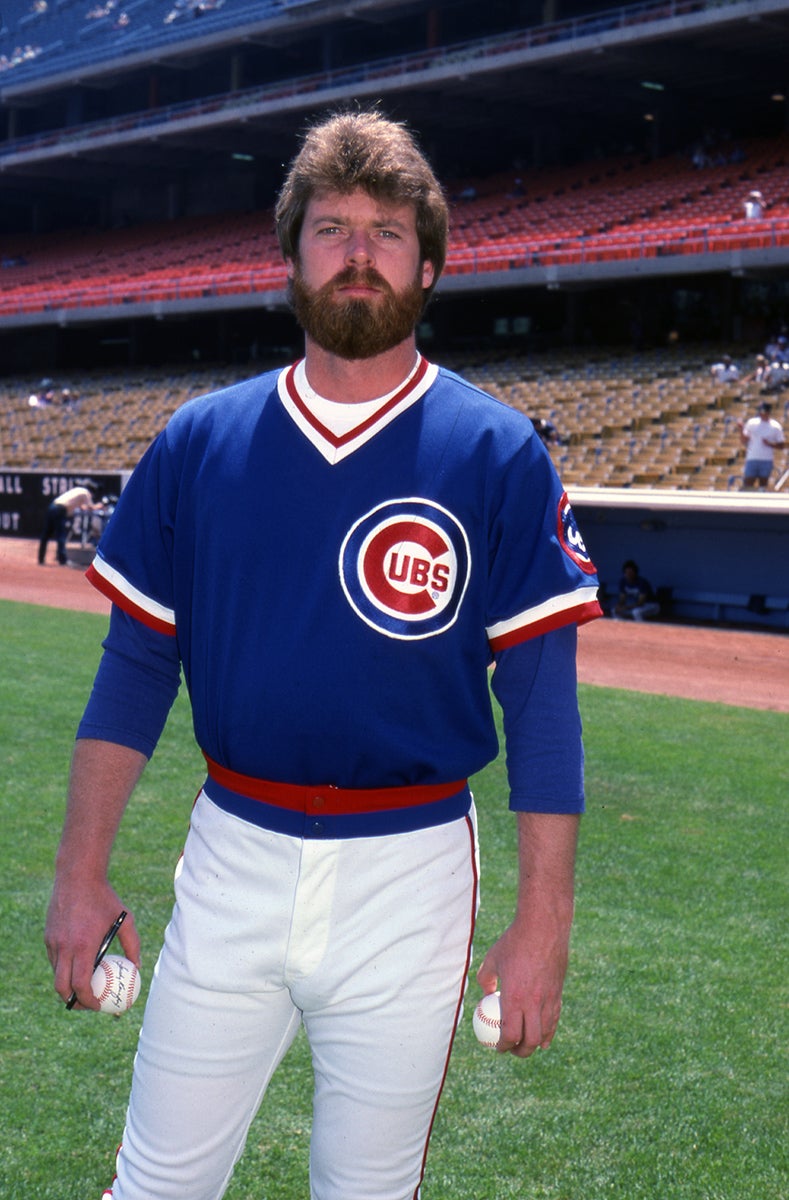
But with free agency approaching after the 1984 season, Sutcliffe knew his time in Cleveland was drawing to a close. The uncertainty might have been a distraction as he was 4-5 with a 5.15 ERA in 15 starts when Cubs general manager Dallas Green consummated the trade that sent Sutcliffe to Chicago. He won his first two starts, lost a 7-1 decision to the Dodgers on June 29 and then proceeded to reel off 14 straight wins over 17 starts, finishing the year 16-1 with the Cubs and 20-6 overall. On Sept. 24, Sutcliffe pitched a two-hitter against the Pirates to clinch the first NL East title in Cubs history.
He would be named the unanimous winner of the NL Cy Young Award – despite not appearing in an NL game until June 19 – and finished fourth in the NL MVP vote.
In the NLCS vs. the Padres, Sutcliffe allowed just two hits over seven innings in Game 1 in a 13-0 Chicago victory. But San Diego extended the series to a deciding Game 5, and Sutcliffe held a 3-0 lead through five innings in that contest while allowing only three baserunners. But in the bottom of the sixth, the Padres turned two singles, a walk and two sacrifice flys into two runs. Then in the seventh, an error on a groundball hit to Cubs first baseman Leon Durham allowed the tying run and opened the floodgates as San Diego scored four times to chase Sutcliffe.
The Padres would win the game 6-3 to advance to the World Series.
“I hoped we would get to (Sutcliffe),” Padres manager Dick Williams told UPI. “He has really stymied us in the past.”
Following the season, Sutcliffe was the focus of an intense bidding war among several teams, including the Padres.
“With Rick Sutcliffe, I think we have a chance to be a dominant team over the next five years,” Padres president Ballard Smith told the Los Angeles Times during negotiations. “I don’t think any team can offer as much as we can concerning the future.”
But in the end, Sutcliffe decided Chicago was the best fit and signed a five-year, $9.5 million contract with the Cubs, making him the game’s highest-paid pitcher.
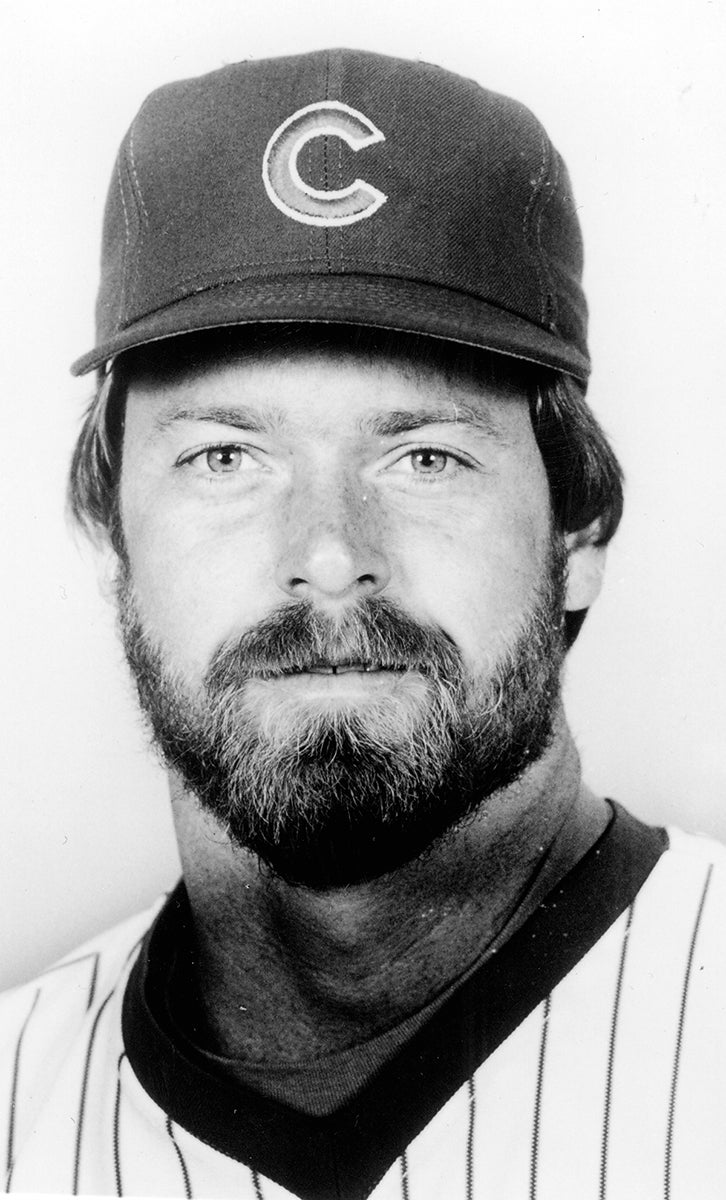
The magic of 1984, however, did not repeat in 1985 for Sutcliffe or the Cubs. He endured three stints on the disabled list, suffering hamstring injury in May and a left leg muscle injury in July that ultimately placed a strain on his pitching shoulder. He pitched in only two games after July 28 and finished 8-8 with a 3.40 ERA as Chicago placed fourth in the NL East with a 77-84 record.
In 1986, things got worse as Sutcliffe went 5-14 with a 4.64 ERA as the Cubs finished fifth in the NL East. But in 1987, Sutcliffe regained his form and led the NL with 18 wins while pitching to a 3.68 ERA over 237.1 innings. He was named to his second All-Star Game and finished second in the NL Cy Young Award voting, falling two points short of winner Steve Bedrosian, who led the majors with 40 saves. It was the closest NL Cy Young Award vote in history.
Sutcliffe maintained his excellent performance over the next two seasons, going 13-14 with a 3.86 ERA in 1988 and following that with a 16-11 mark and 3.66 ERA in 1989 as the Cubs won another NL East title. Sutcliffe made his seventh-straight Opening Day start in ’89 and his fastball velocity crept back into the 90s.
“I’m throwing harder,” Sutcliffe told AP early in the season. “My shoulder feels fine. I don’t know why.”
In June of 1989, the Cubs signed Sutcliffe to a two-year extension that would take him through the 1991 campaign. But as the season progressed, Sutcliffe’s shoulder began to bother him. After starting and winning the Cubs’ final game of the regular season, Sutcliffe was tabbed by manager Don Zimmer to start Game 3 of the NLCS vs. the Giants. He allowed three runs in the first inning but settled down from there and left after six innings with the Cubs leading 4-3. But the Giants scored twice in the bottom of the seventh on a two-run home run by Robby Thompson off Les Lancaster, and the Cubs lost the game 5-4.
The Giants won the series in five games.
Sutcliffe’s aching shoulder required rotator cuff surgery in May of 1990, and he did not make his first appearance of the season until Aug. 29. He pitched in only five games, going 0-2 with a 5.91 ERA.
After appearing in just two Spring Training games against big league opponents in 1991, Sutcliffe won his first start on April 18 against the Pirates.
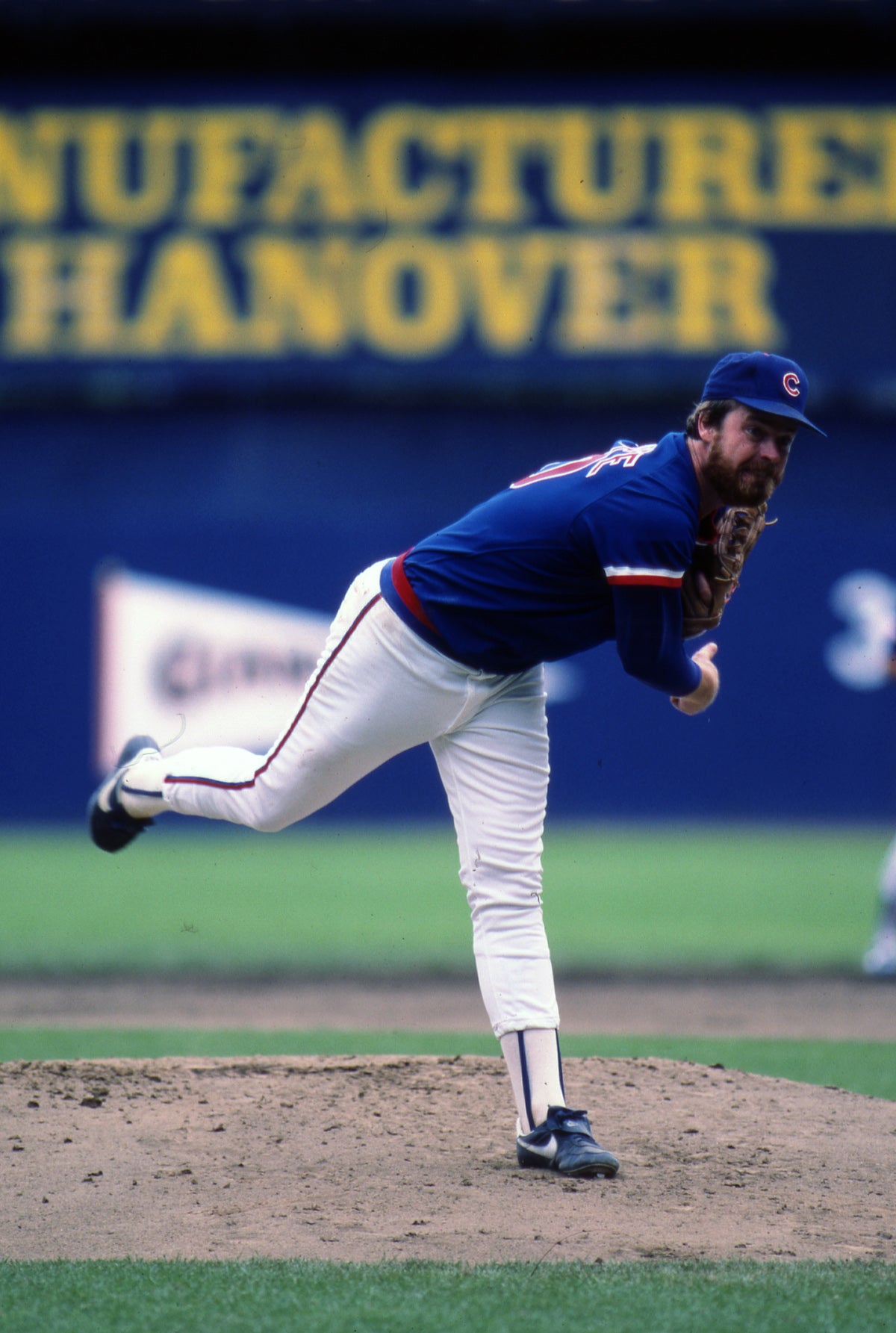
“It’s been a long time since there’s been a ‘W’ beside my name,” said Sutcliffe, whose six innings of work provided him with his first win since the finale of the 1989 season.
“This means a lot more than the first (victory) I had,” Sutcliffe told the AP. “I was 21 then and expected to win some games up here. Tonight, I didn’t know.”
But Sutcliffe was sidelined with weakness in his shoulder in June and did not pitch in June or July. For the season, he went 6-5 with a 4.10 ERA in 96.2 innings in the final year of his contract.
On Dec. 19, 1991, Sutcliffe signed a one-year, $1.2 million deal with the Orioles. Baltimore was encouraged by his final nine starts of the season where he went 4-1 with a 2.25 ERA.
“Physically, there’s no problem,” Sutcliffe told the AP after signing his new deal.
Sutcliffe backed up those words in 1992, earning the Opening Day start – Baltimore’s first game at Camden Yards – against Cleveland and pitching a five-hit shutout. He was a workhorse for the Orioles that season, starting a big league-best 36 games while going 16-15 with a 4.47 ERA. He returned to Baltimore for the 1993 season, going 10-10 with a 5.75 ERA.
Then in 1994, Sutcliffe signed with the Cardinals and worked his way into the rotation. But after a rough June and July that saw him carrying a 6-4 record and 6.52 ERA, Sutcliffe knew the end of his career was approaching.
“The way it sounds, I may need surgery just to go fishing,” Sutcliffe told the AP. “I’ve been praying the last few days, looking for an answer. I’ve been getting one, but it’s not the one I want to hear.”
Sutcliffe soon found himself on the 60-day disabled list after an MRI found a torn labrum following an outing against the Braves on July 22. It would turn out to be the last game of Sutcliffe’s big league career.
“I knew something wasn’t right with my arm because it has been bothering me all season,” Sutcliffe told the Belleville (Ill.) News-Democrat. “But when I threw that (last) pitch, it just popped.”
But Sutcliffe was already thinking about what would become his next career – though he would not officially retire until April of 1995.
“I guess it’s time I have to step back and start thinking about life after baseball,” Sutcliffe said. “I have to stay in the game in some way.”
He would – first becoming a coach in the Padres system and then joining the Padres’ broadcasting team. Soon, he would become one of the game’s most recognizable voices while calling games for ESPN.
Over 18 big league seasons, Sutcliffe posted a record of 171-139 with a 4.08 ERA and 1,679 strikeouts over 2,697.2 innings. One of the most respected pitchers of his time, Sutcliffe won the 1987 Lou Gehrig Memorial Award and the 1987 Roberto Clemente Award.
But for millions of Cubs fans, his career could be boiled down into three-and-a-half incredible months in 1984.
“I don’t know if it was loyalty or what, but something happened here in the last three months of the baseball season,” Sutcliffe told AP after signing his contract with the Cubs following the 1984 season. “They took a person who was spinning his wheels and the fans, the organization and especially the players behind me turned me around.”
Craig Muder is the director of communications for the National Baseball Hall of Fame and Museum

